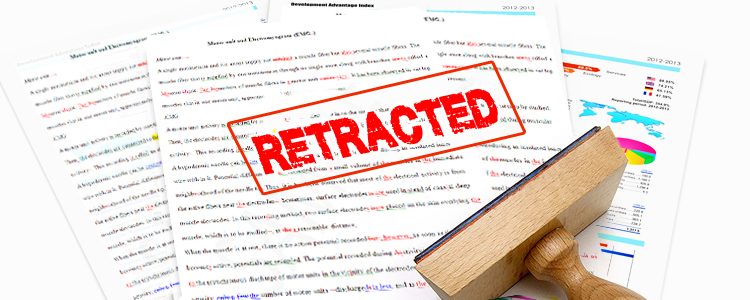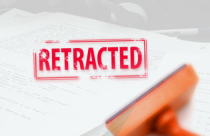Retraction of Articles Due to Duplication of Content: A Report of Five Recent Cases

One aspect of academic publication that is rarely given any attention, especially in the case of new and early career researchers, is the retraction process. Published articles are retracted on a regular basis and for a wide range of reasons. The most high profile cases are those of outright scientific fraud and academic misconduct, such as the infamous Andrew Wakefield retraction.
Such dramatic cases are not the norm, however, and retractions for large-scale scientific misconduct are rare. In fact, one of the most common and rarely noted reasons for paper retraction is duplicate publication and plagiarism, i.e., the publication or attempted publication of the same data in two or more articles without citation. The Retraction Watch blog recently posted an article that described five cases of this form of scientific misconduct in recent years. Each case offers a glimpse into the many different methods of academic misconduct.
Five Recent Cases
The first case reported by Retraction Watch was published in the Annals of Tropical Medicine and Public Health in 2014, and was retracted in January 2016 after it was revealed that the entirety of the text had been lifted directly from an article published in Toxicology International in 2013. The authors of the 2013 article claimed that the authors of the retracted 2014 article were their junior colleagues at the same hospital in Uttar Pradesh, India. The text was reproduced without citation to the original authors and without their permission, leading to the withdrawal of the article for plagiarized material and data.
The fourth retraction in the blog post reports a second example of this same form of academic misconduct: the direct duplication of text and data from a single source without attribution or permission. In this case, the retracted article was published in 2012 in the Journal of Pharmacy and Bioallied Sciences and the plagiarism was reported in 2015. The editors noted that the plagiarized text sections are extensive and affect every section of the retracted article.
The second case reported by Retraction Watch comes from the 2012 issue of the Journal of Indian Prosthodontic Society and demonstrates a marginally less brazen form of plagiarism. The article, submitted under the names of four authors, was discovered in 2014 to be a full and direct copy of an article written by four authors from Zurich and Aberdeen, and published in a European journal in 2008. In this case, unlike the former, the text had been rewritten and the focus slightly shifted, but the data and underlying ideas are clearly duplicated in their entirety. The authors had attempted to disguise their duplication of the data by rewriting the text.
Unusually, the third case refers to a book chapter rather than a journal article, and it is an example of plagiarism that is committed from multiple sources rather than a single source. The chapter “Psychiatric Disorders” published in 2013 in Sleepiness and Human Impact Assessment was retracted in 2014 following the discovery that a significant amount of data and text was included without attribution that had been previously published in four separate articles by different authors. In this case, the authors of the retracted chapter claimed that the plagiarism was accidental, rather than purposeful, and resulted from the inadvertent, but extensive, omission of quotation marks.
Finally, the blog post reports a case of self-plagiarism. This occurs when an author submits their own study to two or more journals. This practice is a violation of the copyright of the original publishing journal, and has the potential to skew the evidence base of the relevant field. Most reputable journals maintain an originality policy that states that no more than a certain percentage of an article’s content can have been published elsewhere.
In the example cited by Retraction Watch, the author had published large sections of their own work in two separate articles; the first was published in 2013 and the second in 2014. While this alone was enough to warrant withdrawal of the second article on the basis of duplicate publication, the investigation also revealed an instance of straightforward plagiarism. The author had used a graph originally published in a 2005 thesis without attribution or citation.
Ethical Academic Conduct
These cases demonstrate the many varieties of academic and scientific misconduct that are committed by researchers in the pursuit of personal gain. Such actions harm both the original researchers whose work has been plagiarized, the evidence base of each individual field, and the scientific community as a whole.
As the editors of the Journal of Turbulence note in the final retraction notice reported here, articles are accepted,peer-reviewedd, and published based on trust and good faith, and these principles underpin scientific publishing. Plagiarism and duplicate publication serve only to undermine this.









